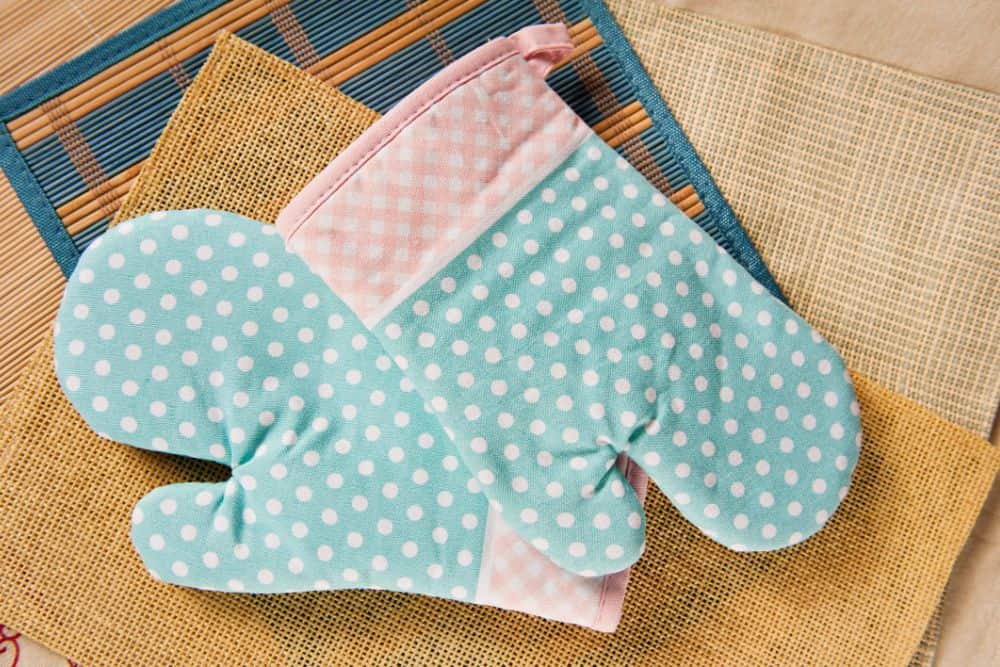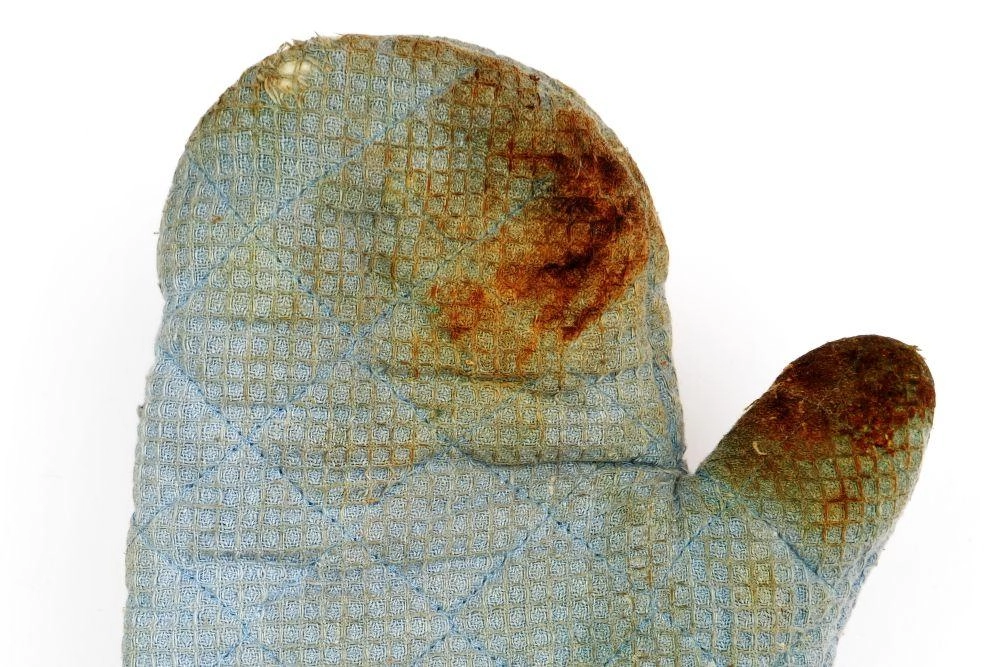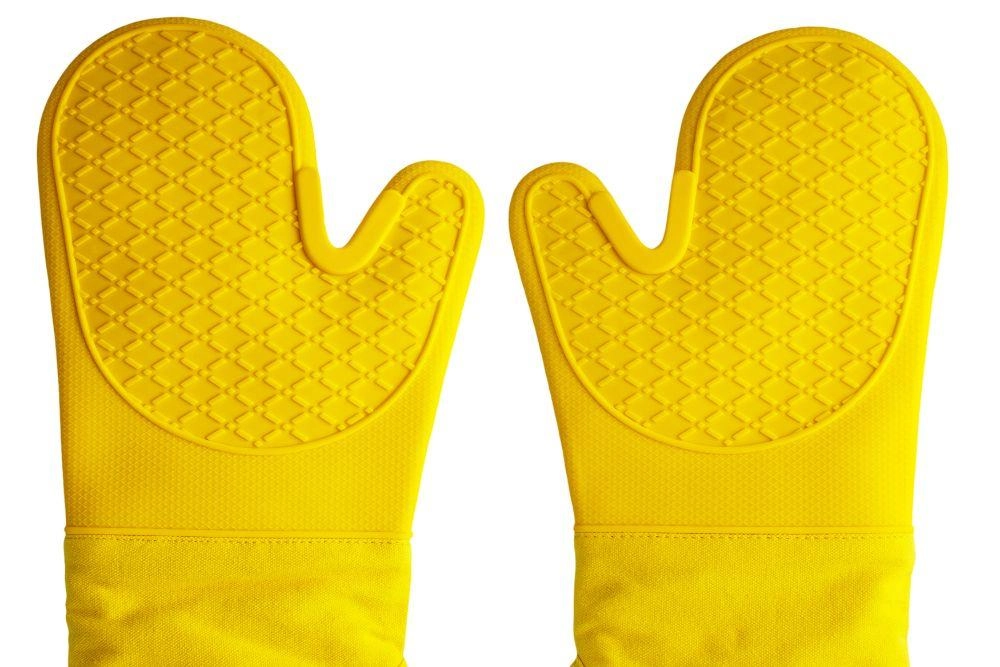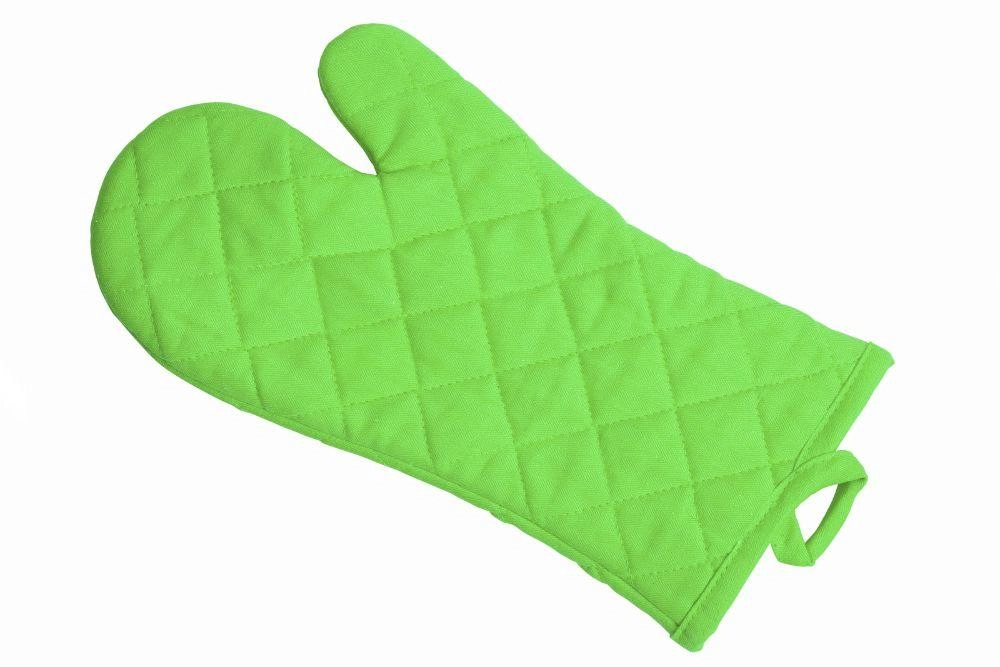Cooking can be exciting and educational, yet dangerous when not taken with the appropriate precautions. It may be convenient to grab a towel or cloth when the oven timer goes off, but the risk of injury is high, so grab a hot mitt or pot holder instead.
What is the purpose of an oven mitt? The answer is simple: protect your skin while handling a hot dish.
Oven mitts provide a barrier between you and the hot dish or pan. They cover your entire hand to prevent burning while reaching into the oven.
However, not all hot mitts are alike, and the type of protection is crucial when shopping for one. What makes oven mitts suitable for the kitchen is the material of which they are made.

Finding the Best Oven Mitts for Your Needs
The fabric of an oven glove must have heat resistance to protect against burns. What kinds of materials are in an oven mitt?
Hand protection should be a priority when choosing cooking gloves for the kitchen. You will find that the best oven mitts consist of flame-retardant fabric and offer the highest protection from heat.
Standard mitts are about 12–13 inches in length. The ideal oven glove should have these features:

Cloth Oven Mitts Can Collect Stains and Become Downright Gross
Oven gloves and pot holders should comprise materials that resist extreme heat, provide optimum protection, and are comfortable. Your oven glove should allow you to grip any handle or side of a dish without slipping.
Oven mitts do not have fingers, so gripping may not be an option for pots with handles. Hot mitts are ideal for removing cookie sheets and casserole dishes from the oven.
The materials of cooking mitts and the gloves depend on heat intensity and type of cooking.
Silicone is a flexible material that safeguards against heat up to 500 degrees. Silicone gloves help you securely grip your hot pan, hot plates, hot utensils, hot cookware, and hot liquid while transferring them from one place to another.
As a precaution, avoid leaving them near an open flame, as they can catch fire.

Silicone Mitts Stay Clean and are Quite Heat Resistant
Silicone mitts and gloves are stain-resistant and easy to clean. Pop them into the washer on the gentle cycle in cold water.
Silicone oven mitts are safe to wear while cooking in cast-iron dishes because of silicone’s resistance to high temperatures.
Other uses for a silicone glove are loosening a tight lid, washing dishes by hand, and transferring ice or other frozen foods.
Neoprene is a fabric you will find in a wetsuit, such as that of a scuba diver. Neoprene oven mitts consist of waterproof rubber that provides high heat resistant material, which includes hot grease.
They are flexible and resistant to stains and dangerous chemicals.
It is best to wash your neoprene hot mitts by hand with mild detergent. Thoroughly rinse each mitt and let them air dry.
For high temperatures that exceed 900 degrees, Nomex is the material of choice. This thermal and non-flammable polymer is used in firefighter uniforms because of its heat- and flame-resistant properties.
It protects firefighters from dangerous flames, making it durable and reliable.
Nomex gloves are ideal for removing hot pots after frying or grilling.
How do you clean Nomex oven mitts and gloves? Wash them separately from other laundry using regular detergent. Avoid bleach and fabric softener, which can damage the fibers.
Kevlar provides thermal protection because of the strength of the nanofibers in the material. The Kevlar molecules stick together, creating a lightweight and breathable fabric that is resistant to heat.
Kevlar is flame- and heat-resistant, meaning it does not melt or shrink. The same material in a bulletproof vest is perfect for extreme temperatures.
Care of the Kevlar mitts is easy because they are machine washable (cold water only) and then you put them in the dryer immediately after.
You can hand wash them with regular detergent. If you prefer to air dry them, lay them out flat. No matter how you wash them, avoid bleach.
Leather can withstand heat up to 450 degrees or more - like these oven mitts from Amazon - but temperature resistance will vary widely basted on manufacturer.
Leather gloves can be water-resistant, but they may become uncomfortable with prolonged use. Leather is not an ideal choice for grilling or frying.
It is delicate to clean and requires hand washing only. Experts recommend washing your leather oven gloves in warm distilled water with mild detergent, then air drying them.
Similar to Kevlar, Aramid fabric is highly resistant to heat and flames. This material has protected first responders and military soldiers in the line of duty.
The Ove Glove is an example of cooking handwear consisting of aramid fabric with a silicone grip.
To clean mitts consisting of aramid fabric, wipe them down with a damp cloth. You can wash them separately in a machine with a gentle detergent, but double-rinse them to ensure all cleaning agents are gone.
Although not the fabric of choice, cotton fabric oven mitts are inexpensive alternatives for hand protection.
They offer comfort but do not protect against high temperatures. Terry-cloth potholders can withstand warm dishes.
Cotton mitts and terry cloth are flammable and will ignite if you leave them close to a heat source for too long. Use cotton oven gloves when cooking up to 200 degrees.
Cotton lining and terry cloth are easily washable in regular cycles. 
Cotton Oven Mitts Can Collect Dirt, but They are Washable
It may sound crazy to use welding gloves for cooking, but they are sturdy and can withstand extremely high temperatures. Carbon Fiber welding gloves can withstand temperatures up to 2000 degrees Fahrenheit for a limited amount of time. Welding gloves are not easy to clean because of the steps it takes to wash them:
Lisa put oven mitts to the test to see which one was the best.
For more information about oven mitt material, these questions may help you decide which to buy.
A thick layer prevents holes in the fabric. The middle layer is thick, and heat-resistant insulation that provides a barrier between the hot item and your skin.
Metal is a conductor of heat, which you do not want in an oven glove. Mitts and potholders should resist heat. Metal can get hot and burn your skin, and it is not a flexible material.
For the best heat protection for your surfaces, silicone works best. It is durable, slip-proof, and easy to clean. You can use them to get a secure grip on hot handles or place the hot pot on the counter.
Long oven mitts or gloves protect the forearm against burns when removing dishes from the oven. You can also use longer versions if cooking on a grill or around open flames.
